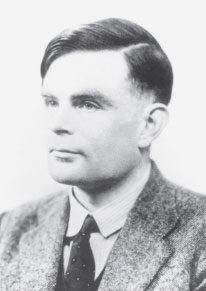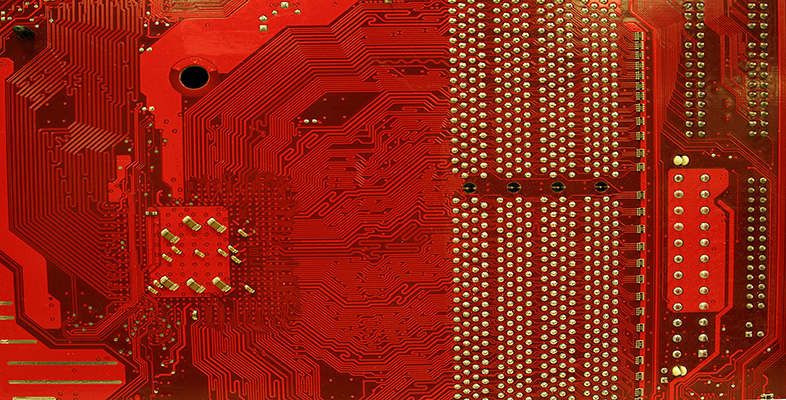3 AI
3.1 Enter the digital computer
You might be a touch puzzled at this point. So far, I've been talking about artificial intelligence as one of the major intellectual projects of the 20th century, with roots stretching back to the 17th century and earlier. Now I'm introducing AI as if it was something quite different. Doesn't AI just stand for artificial intelligence?
It does; but here the term AI, or more specifically Symbolic AI, will be used to refer to something slightly narrower – to a particular branch of artificial intelligence that began in the early 1940s and continues to this day, an approach to the goal of building intelligent machines that has certain specific assumptions and strategies. From now on, we will use the term 'Symbolic AI' to refer to a thread running through the broader project of artificial intelligence: it is not the whole project itself. The purpose of this section is to reveal what the principles and goals of Symbolic AI are.
Symbolic AI is generally reckoned to have been born in1956, at the 'Dartmouth Summer Research Project on Artificial Intelligence' in New Hampshire, USA. However, this is a US-centric view of history. In fact, Symbolic AI was being discussed in Britain as early as 1941. During the Second World War, the great English mathematician Alan Turing – often described as 'the father of AI' (and of 'artificial life' and of computing itself) – was working at Bletchley Park, Britain's wartime code-breaking centre, where some of the earliest computers were built. There, his colleagues recall, he circulated a paper (now lost) on the subject of machine intelligence. The question of the possible construction of machines capable of playing chess was also freely discussed among the code-breakers. In 1948, Turing set out his ideas in an extraordinarily far-sighted paper 'Intelligent Machinery', which not only anticipated Symbolic AI, but also built on cyberneticists McCullough and Pitts' work on artificial nervous systems. In 1951, the first chess-playing program, written by Dietrich Prinz, was running on a computer at Manchester University. A draughts program was devised by Christopher Sylvester in the same year and ran successfully on the Manchester computer in 1952. Systems incorporating simple forms of learning appeared on Cambridge University computers in 1951. Britain had an early lead in computer technology and in artificial intelligence which it soon lost.

In the United States scientists were also quick to realise the potential of the new computing technologies. At the 1956 summer conference at Dartmouth Naval College, the whole question of thinking machines was discussed. It was here that the term 'artificial intelligence', coined by John McCarthy, made its first appearance.
Exercise 5
Read quickly through the document linked below. This is an edited extract from the original proposal for the Dartmouth conference.
Dartmouth conference extract [Tip: hold Ctrl and click a link to open it in a new tab. (Hide tip)]
Try to sum up what you think the authors propose as the main goals of the general problem of building intelligent programs. What approaches to these goals do they consider? Some of the later pages are rather technical, but don't get bogged down in these – just try to extract what you think are the main points.
Comment
Despite the fact that this is an edited version of the original, it is still quite a complex document. Here are what I thought were some of the most important points, ones which I'll expand on in the rest of the course and which will come up again throughout the course.
First of all, the authors focus on certain features of human intelligence:
- use of language
- forming and using concepts
- complex problem-solving, such as playing chess
- creativity.
Constructing machines that have these features is the goal of Symbolic AI.
The authors suggest some of the approaches to this problem that they believe might be most effective. I particularly noted the following:
- Search – Machines can locate the answer to a problem by sifting systematically through all possible answers and selecting the correct (or the best) one. This idea had already been suggested by Turing, influenced very strongly by his wartime work on code-breaking machines.
- Symbols and rules – In discussing the possibility of machines' use of language, the authors conjecture that computers can be programmed to manipulate words (symbols) according to logical and linguistic rules.
- Mathematical structure – Later in the paper McCarthy writes of aspects of his own work. Among the points he raises is the question of how brains form models of the environment around them. His assumption seems to be that any model formed by a computer of its environment must be a logical or mathematical structure of some kind: The emphasis here is on clarifying the environmental model, and representing it as a mathematical structure'.
- Randomness – The authors suggest that the problem of creativity in machines could be handled by injecting some degree of randomness into the orderly processes of the computer.
- 'Neuron networks' – Insights into the workings of human intelligence can be found, the authors suggest, by simulating on computers the structures found in the brain. This is a major theme of the course; but, oddly enough, as you'll see, this idea lay dormant for many years.
Finally, I was struck by one crucial proposal – that Symbolic AI should start with very simple problems and environments and work up to ones that are the most complex and challenging:
Often in discussing mechanized intelligence, we think of machines performing the most advanced human thought activities – proving theorems, writing music, or playing chess. I am proposing here to start at the simple ... to work up through a series of easy stages in the direction of these advanced activities.
Some of these proposals were not followed up; others came to be the core of Symbolic AI research in the ensuing decades. To simplify the above discussion, just let me isolate two key principles which certainly did become central – these are:
- Representation – 'Intelligent' computer systems contain a model, in some logical or mathematical form, of the problem being solved, or of their environment. These models are thus essentially symbolic, consisting, as they do, of logical expressions.
- Search – Computer systems can find 'intelligent' answers to complex problems by searching among all possible answers for the best one. The process of search will be governed by rules.
These may sound rather abstract at this point. Later in this course I'll return to the question of what, exactly, symbols, rules and models are.
SAQ 4
Very briefly summarise the distinction that is being made between artificial intelligence and Symbolic AI.
Answer
For us, Symbolic AI is a study of the technological questions surrounding the possible replication of human intelligence on digital computers, using principles of representation and search. Artificial intelligence is a much wider quest, of which Symbolic AI is a part, to build intelligent machines.
Up to now we seem to have been assuming that it's clear what an intelligent machine is, and how we would recognise one if we saw it. But are the answers to these questions really so obvious?
